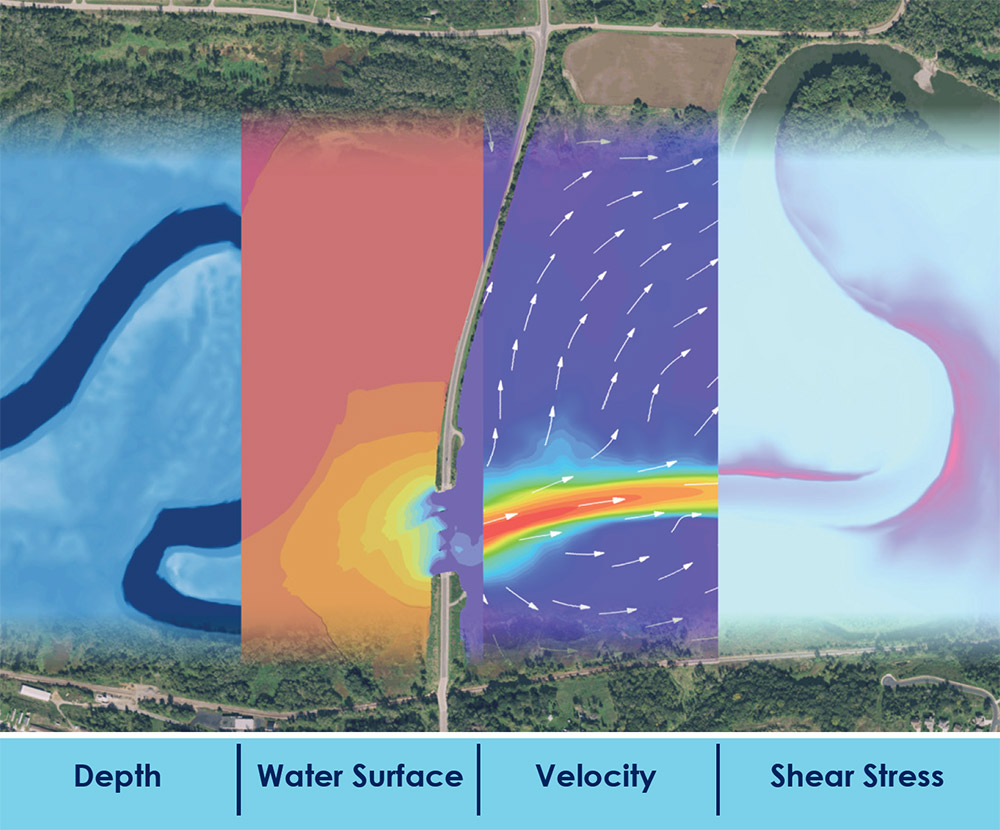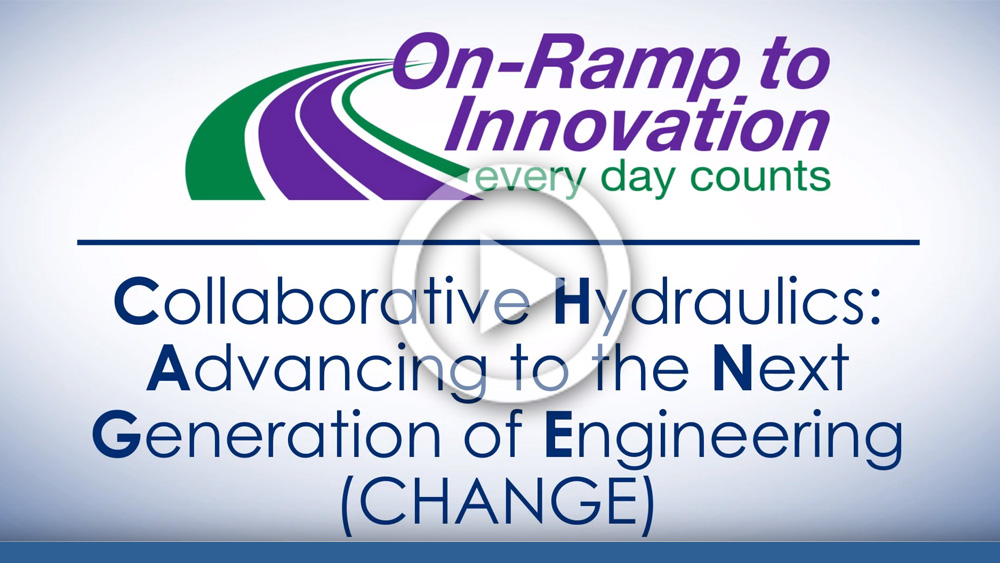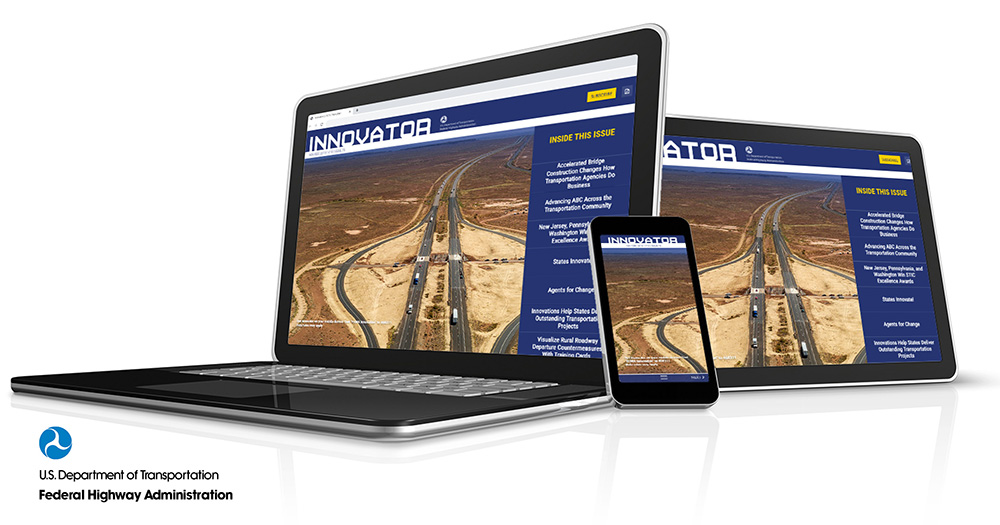November 7, 2019
Innovation of the Month:
Collaborative Hydraulics: Advancing to the Next Generation of Engineering (CHANGE)
Engineers and designers have used one-dimensional (1D) hydraulic modeling tools for nearly 60 years. User interfaces have greatly improved during this time, but the underlying modeling techniques have remained the same. These apply several simplifying assumptions that can lead to overly conservative, inadequate, or inaccurate results and are insufficient to meet many of today's project requirements.

Next-generation hydraulic tools, such as those presented in Collaborative Hydraulics: Advancing to the Next Generation of Engineering (CHANGE), help agencies understand the complex interactions between river or coastal environments and transportation assets. This enables safer project designs, enhances the ability for an agency to communicate and explain these interactions with stakeholders, and leads to more efficient project delivery.
CHANGE Benefits
- Improved Quality and Resiliency – 2D modeling results in better representations of flow conditions, including depths and velocities. This can improve project quality by informing location and size of structures, depths of bridge foundations, and analyzing environmental impact.
- Enhanced Collaboration – 3D graphical visualizations of 2D models help communicate complex interaction between waterways, transportation infrastructure, and the surrounding environment in an intuitive and visually rich way.
- Streamlined Delivery – CHANGE can help streamline project development, including environmental, regulatory, and engineering activities.

On November 14, 2019, from 1-2 PM ET, the CHANGE team will host a webinar to support the release of a new 2D hydraulic modeling reference document, "Two-Dimensional Hydraulic Modeling for Highways in the River Environment," You are able to register for this webinar here. To learn more about next-generation hydraulic modeling, watch our spotlight video or contact Scott Hogan or Laura Girard, with the FHWA Resource Center.
Virtual Public Involvement – Thinking outside of the box
Public involvement tools and practices have expanded and shifted dramatically over the past decade due to changes in communications, technology, and lifestyles. As transportation professionals, we can no longer expect the public to come to us, but need to reach them in their everyday lives – online, at home, and in chosen gathering spaces. To help practitioners navigate this changing environment, FHWA has developed a series of fact sheets and short videos highlighting innovative and proven, public involvement techniques for today's transportation plans and projects. Highlighted VPI tools and strategies include:
- Meetings-in-a-box – Find out how the Atlanta Regional Commission has taken an "out-of-the-box" approach to public involvement.
- Pop-up Outreach – Learn more about how the Minnesota DOT has turned their State Fair into a public outreach opportunity.
- Interactive Maps – Explore how the Mid-Ohio Regional Planning Commission received 300+ project suggestions during the development of their Metropolitan Transportation Plan.
These techniques were discussed by practitioners during Webinar 1 of the Extending our Reach webinar series. To find out how virtual public involvement can help your agency expand its outreach, contact Scott Allen, FHWA Office of Planning, or Carolyn Nelson, FHWA Office of Project Development and Environmental Review.
New Issue of Innovator Available
The November/December issue of Innovator is available on its new web platform, accessible from any device! This new and improved format will give an optimized experience, whether you access it from your mobile phone, tablet, or computer.

In this issue:
- Accelerated Bridge Construction Changes How Transportation Agencies Do Business
- Agents for CHANGE
- Three States Win STIC Excellence Awards
- And more…
Comments? Questions? We'd love your feedback! Drop us a line and let us know what you think.
Read past issues and sign up to receive Innovator by email here, or text "FHWA Innovation" to 468311 to get Innovator on your smartphone.
About EDC
Every Day Counts, a State-based program of the Federal Highway Administration’s Center for Accelerating Innovation, works with State, local, and private sector partners to encourage the adoption of proven technologies and innovations to shorten and enhance project delivery.


